The best varieties of tomatoes for growing in a greenhouse (polycarbonate or film): an overview of the best tomatoes
Without exaggerating too much, we must admit that tomatoes are one of the most demanded crops for growing in a greenhouse. Having no claims to the conditions for the growth and development of plants - the air is dry, there is ventilation, the soil is wet, fertilization is normal, etc., nevertheless, the correct choice of tomato varieties intended for growing in a polycarbonate or film greenhouse remains very important.
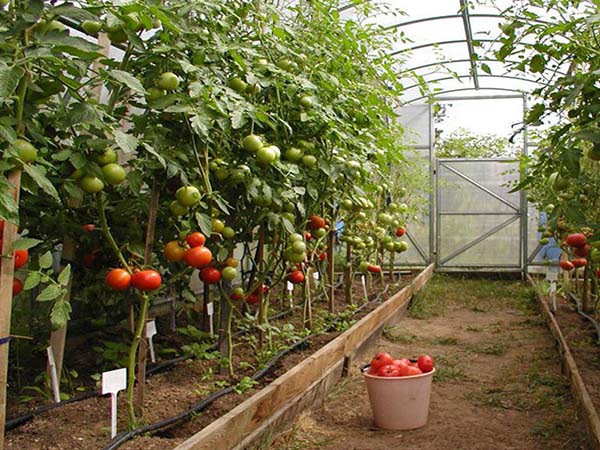
Content
Which tomatoes are suitable for growing in a greenhouse (protected ground)
Of course, in the Middle Lane (Moscow region), the best place for growing tomatoes (as well as cucumbers) will be a greenhouse, and preferably a polycarbonate one, although a film or glass is also suitable. It is in greenhouse conditions for plants (tomatoes, cucumbers) that it is easiest to create a favorable microclimate, where they will be reliably protected from adverse weather conditions, the same return spring frosts, as well as an autumn drop in temperature (at first).
A good greenhouse tomato variety should have the following characteristics:
- early ripening (this is especially true for indeterminate varieties);
- resistance to major diseases, as well as to temperature extremes (heat-resistant and / or cold-resistant);
- well and long stored, as well as transported;
- and most importantly - to be tasty and fruitful!
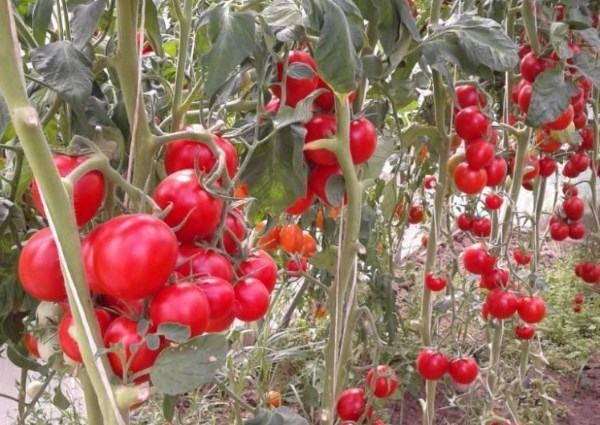
By the way! On our website you can find detailed articles on growing and caring for tomatoes in a greenhouse:
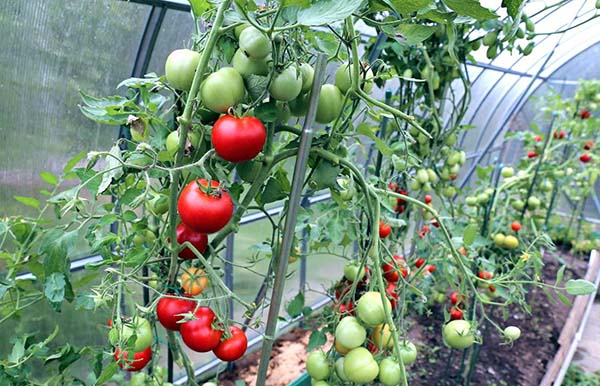
As a rule, tall tomatoes are used for greenhouse cultivation, in other words, of an indeterminate (unrestricted) type of growth, as well as semi-determinant and medium-sized determinant varieties, but low-growing determinant varieties are often grown. Read more about all the nuances below ...
Video: varieties of tomatoes for the greenhouse
Indeterminate Tomatoes for Greenhouse Growing
Naturally, the most suitable variety for growing in a greenhouse is the indeterminate type of tomato. It is by growing tall (indeterminate) tomatoes, which are ways to bear fruit throughout the summer and autumn seasons (before frost), that you can get the maximum yield.
By the way! In details on the advantages and features of growing indeterminate tomatoes read in this article.
The best tall tomatoes for the greenhouse
There are very, very many good varieties of indeterminate (tall) tomatoes for the greenhouse. To present information more interesting, they can be classified, for example, in color, as well as in shape and size.
Note! The list of the best indeterminate tomatoes for a greenhouse was prepared based on the degree of popularity of the names of varieties and hybrids, an analysis of the reviews of experienced gardeners, as well as the author's personal opinion.
The most popular and best varieties of indeterminate (tall) tomatoes for growing in a greenhouse, depending on the classification criterion, can be called (alphabetically):
Red
The most common red-fruited tomato varieties for the greenhouse are:
Bull heart red
The most favorite official tomato variety. Also, now there is a Bull Heart Gold, Compact, Cream, Raspberry, Orange, Peach, Pink, Black, Chocolate, Amber.
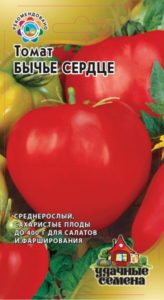
- Mid-season (mid-late) variety. From germination to fruiting 120-130 days (according to other sources, 105-110 days, 115-120 days).
- The plant is indeterminate (according to other sources, determinant or semi-determinant), medium-sized, low-leafed. The height of the main stem is up to 150-200 cm. The first inflorescence is laid above 8-9 leaves, the next ones - after 1-2 leaves.
- For open ground and plastic greenhouses.
- The fruit is large, heart-shaped, small-seeded, fleshy, red.
- Weight - up to 400 grams at the first collection, with subsequent - up to 100-200 g.
- Productivity in the open field - 7.0-9.0 kg per sq.m, in film greenhouses - 10.5-12.0 kg per sq.m.
- Excellent classic "tomato" taste - sweet, with slightly noticeable sourness.
- Mainly for salad purposes. Also suitable for preserving tomato slices and making tomato juice.
- They give a decent harvest even in cool and rainy summers.
De barao red
One of the most popular tomato varieties. There are also De barao Gold, Orange, Pink, Royal, Black.
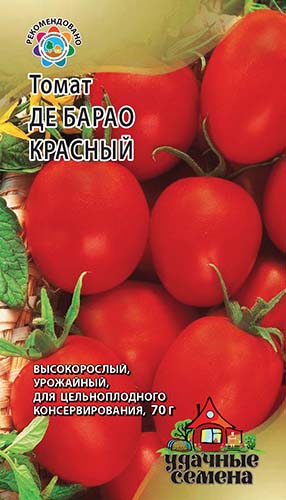
- Mid-season variety (115-120 days from germination to fruiting).
- The plant is indeterminate, the variety is highly branched, strongly leafy, more than 2 m high. Requires garter and pinching. The first inflorescence is laid above 9-11 leaves, the next ones - after 3 leaves.
- For film and glazed greenhouses or for growing in open ground (in more southern regions).
- The fruit is oval, dense, the color of the unripe fruit is green, with a dark spot, the ripe fruit is red.
- Fruit weight - up to 70 g.
- Productivity - up to 7.5-8.0 kg per sq.m.
- The taste is good. Recommended for fresh consumption and whole-fruit preservation.
- It is cold-resistant and shade-tolerant. Weakly affected by late blight.
Koenigsberg
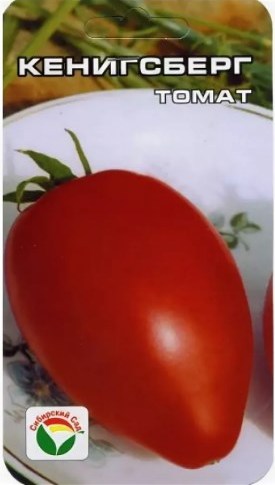
- Mid-season variety.
- The plant is indeterminate, 1.5-1.8 m high. The first inflorescence is laid over 12 leaves, the next ones - after 3 leaves.
- For cultivation in open ground and greenhouses.
- It is characterized by good fruit set in greenhouses.
- Fruits are elongated eggplant-shaped (cylindrical), smooth, dense, red.
- Weight - 155-230 g (maximum up to 300 grams).
- Productivity - up to 2-3 buckets per plant (4.6-20.0 kg per square meter).
- The fruits are very tasty, perfectly canned, well stored.
- Heat resistant.
- The variety has passed acclimatization in the West Siberian region.
King of Kings
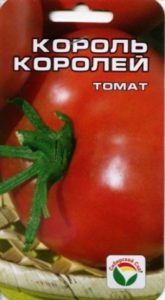
- Medium late variety (120-130 days).
- The plant is indeterminate, vigorous, 1.4-1.8 m high. The first cluster is laid over 9 leaves, the next through 3 leaves.
- For protected ground (greenhouses).
- The fruits are very large, bright red, dense, flat-rounded.
- The minimum weight is 300 g, the maximum weight is 1300-1500 grams.
- Productivity - up to 5 kg per plant.
Red red F1
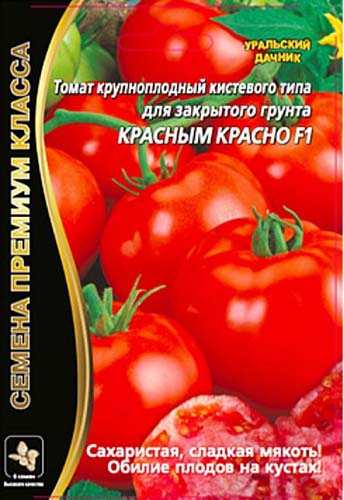
- An early ripe hybrid.
- The plant is indeterminate, tall, medium-branched. Form into 1 stem. For 1 cyst, 5-7 fruits.
- For closed ground (greenhouses).
- Fruits are red, round, smooth, dense, very beautifully shaped.
- Weight - 200-500 grams.
- Productivity - 8.5 kg per plant (up to 25 kg per square meter).
- Unique taste: sugar flesh on the break, grainy like a watermelon.
- Salad purpose: fresh use.
- Resistant to extreme weather conditions (strong drops in temperature) and many diseases.
And other red-fruited indeterminate varieties and hybrids: Budenovka, Eupator, Intuition, Mishka clubfoot, Puzata Khata, Hundred Pounds, Tolstoy, Jubilee Tarasenko and others.
Pink and crimson
The most respected varieties of tomatoes with pink (raspberry) fruits are:
Grandma's secret
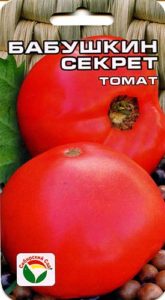
- Mid-season variety. The ripening period is 115-125 days.
- The plant is indeterminate, 150-170 cm high. 3-6 fruits are tied on one brush.
- For film shelters and greenhouses.
- Fruits are flat-rounded, red-crimson (pink), low-seeded.
- Weight - 354 g (up to 1000 grams).
- Productivity - 16.9 kg per sq.m.
- Excellent taste: the fruits are sweet and fleshy. Perfect for fresh consumption and winter preparations.
Chio-chio-san
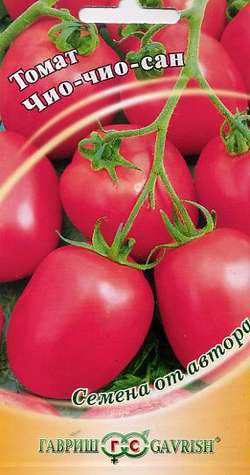
- Mid-season variety (110-120 days from germination to fruiting).
- The plant is indeterminate (with unlimited growth), medium-sized, medium-branched, medium-leafy. The first inflorescence is laid over the 9th leaf, the subsequent ones - after 3 leaves. On a huge branched brush, 50 or more fruits are formed.
- For film greenhouses and open ground with a tie to the stakes.
- Fruits are plum-shaped (ovoid), pink.
- Weight - 30-40 g.
- Productivity - 4.0 kg per plant (or 7.8 kg m2).
- The fruits have an excellent dessert taste.
- Recommended for making salads and canning whole fruits.
- Resistant to tobacco mosaic virus.
Miracle of the Earth
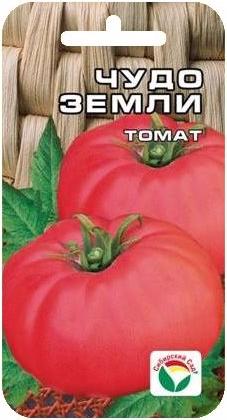
- Medium early grade. Fruiting begins 100-110 days after germination.
- The plant is indeterminate, low-leafed, up to 200 cm high.
- For growing in open ground and film shelters (greenhouses).
- The fruits are flat-round, deep pink (crimson) in color.
- Weight - up to 1000-1200 g (average 380-700 grams).
- Productivity - 13.9 kg / m2 (under film shelters).
- The pulp has excellent gustatory qualities, sweetish dessert taste.
- Universal use: for fresh consumption and processing on purees, juices and pastes.
- Tolerant to unfavorable growing conditions.
Pink giant
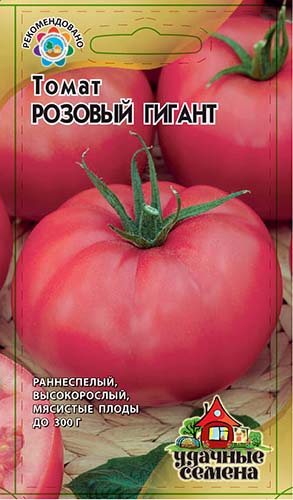
- Mid-season variety, from germination to ripening 111-115 days (according to other sources 120-125 days).
- The plant is indeterminate, 2.0 m high. After planting in a greenhouse, it is formed into 1-2 stems. The first inflorescence is laid over the 9th leaf, the subsequent ones - after 3 leaves.
- For film shelters and glazed greenhouses.
- Fruits are flat-round, intense crimson-pink color. The number of nests is more than 4.
- Weight - 200-300 g (maximum up to 700 grams).
- Productivity up to 2.5-3 kg per sq. meters (according to other sources, 5.8-6.4 kg per square meter).
- The fruits are delicious and fleshy.
- Recommended for fresh consumption.
- Medium resistant to the main diseases of tomato.
Japanese crab
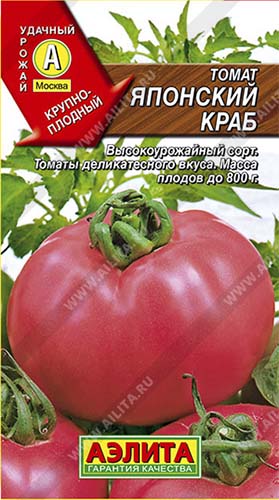
- Mid-season variety (110-115 days).
- The plant is indeterminate, up to 2 meters high.
- For growing in the open field and under film shelters.
- The fruit is flat-round, medium-silvery, pink, multi-chambered.
- Weight - 250-350 g (the first up to 800 grams).
- Productivity - up to 11-15 kg per square meter.
- The pulp is fleshy, very tasty, juicy.
- Ideal for fresh consumption, in salads.
- Differs in high productivity and complex resistance to diseases (to apical and root rot, TMV).
And other pink-fruited indeterminate varieties and hybrids: Pink Paradise, Wild Rose, Eagle Beak, Pink Heart, Sugar Buffalo, etc.
By the way! In general, the site has a detailed article about the best pink (raspberry) tomato varieties.
Yellow and orange
The most recognized varieties of tomatoes with yellow (orange) fruits are:
The mystery of nature
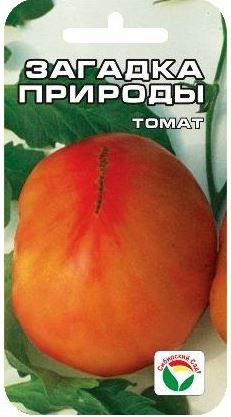
- Medium early grade. From germination to the start of harvesting 109 days.
- The plant is indeterminate, 1.5-1.9 m high, the first cluster is formed above 8-9 leaves.
- For greenhouses, film shelters and open ground.
- The fruits are round, yellow-orange on the outside with a small pink cap, and pink on the cut.
- Weight - 350 grams (average).
- Productivity - up to 16.5 kg per sq. m.
- Great taste. The unique color of the fruit, on the one hand, provides a sugar taste (as in many rose-fruited varieties), on the other hand, the dietary properties of the fruit due to the low content of puric acids, as in varieties with a yellow color.
Malachite Box
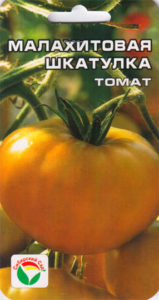
- Medium early grade.
- The plant is indeterminate, up to 1.5 m high.
- For open and protected ground.
- Fruits are flat-round, large, emerald-yellow in color.
- Weight - 250-300 (maximum up to 900 g);
- Productivity - in the open field 4.3 kg per sq.m, under film shelters - 15.1 kg per sq.m.
- The pulp is emerald green, delicate consistency with a melon flavor.
- The fruits are very fleshy, tasty at the very least.
- Suitable for fresh consumption and home cooking.
Honey saved
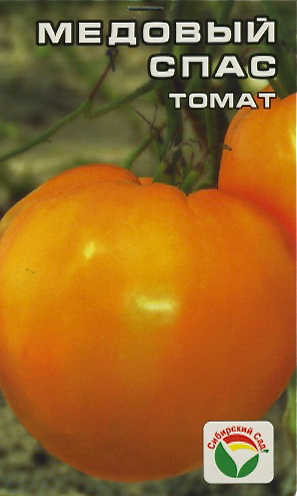
- Mid-season variety.
- The plant is indeterminate, as a rule, with a height of 120-160 cm (depending on growing conditions, indoors - higher, open - lower). It is formed into 1-2 stems with a garter to the support.
- For greenhouses and open ground.
- Fruits are large, kidney-shaped (rounded), warm honey-yellow color. The number of nests is 4 or more.
- Weight - up to 600 g (average - 150-250 g).
- Productivity - 4-5 kg per plant (average), or 5.6 kg per square meter outdoors, 14.0 kg per square meter under film shelters.
- The pulp of tomatoes is very pleasant, sweet, almost acid-free, useful for the nutrition of people with diseases of the intestinal tract.
- Heat-resistant, transportable and resistant to unfavorable growing conditions.
Orange heart
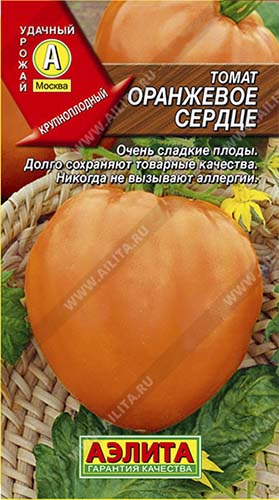
- Mid-season variety, the period from planting seedlings to fruiting is 85-90 days.
- For growing in film greenhouses.
- The plant is indeterminate.
- The fruit is heart-shaped, bright orange, slightly ribbed, of medium density.
- Weight - 180-200 grams.
- Productivity - 6.2 kg per sq.m.
- The taste is excellent, refined. Recommended for fresh consumption.
- The fruits retain their commercial qualities for a long time.
- Resistant to Alternaria leaf spot, cladosporium disease, tobacco mosaic virus.
Southern tan
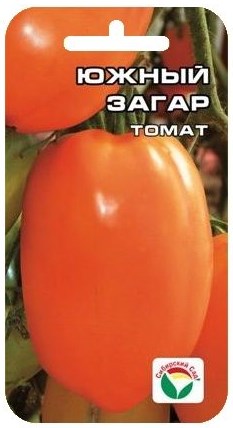
- Mid-season variety.
- The plant is indeterminate, up to 1.7 meters high.
- For greenhouses and temporary shelters.
- The fruits are pepper-shaped, orange in color. Number of nests 4 or more.
- Weight - 150-350 grams.
- Productivity - up to 8 kg per bush.
- Fruits are fleshy and tasty, sweet, high in vitamins and low in acids.
- Fruits are dense, perfect for pickling and preservation, fresh are recommended for dietary nutrition.
As well as other orange indeterminate varieties and hybrids: Altai Orange, Amana Orange, Yellow Cherry, Goldfish, Golden Konigsberg, etc.
Note! In general, the site has a detailed article about yellow (orange) varieties of tomatoes.
Black (brown, burgundy)
The most famous varieties of tomatoes with black (brown, burgundy) fruits are:
Watermelon
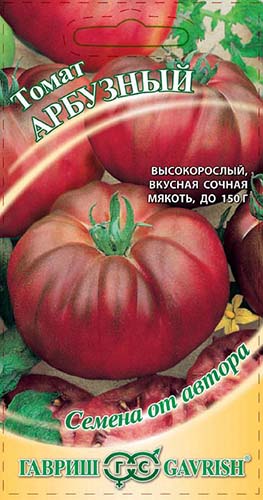
- Medium early (105-110 days from germination to fruiting).
- The plant is indeterminate (over 2.0 m). The first inflorescence is laid above 8-9 leaves, the next ones - after 3 leaves. They are formed into one stem, removing all the "stepsons" and tied to the support. At the end of the growing season, pinch the growing point.
- For film greenhouses.
- Fruits are flat-round, ribbed, multi-chambered.
- Weight - 130-150 g.
- Productivity - 3.0-3.2 kg per plant (4.2-5.6 kg per sq. M).
- The fruits are fleshy, juicy, tasty. Recommended for making fresh salads.
- Resistant to temperature changes.
Black moor
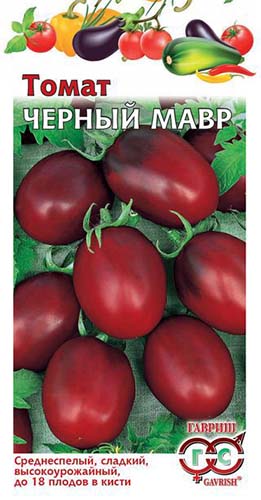
- Mid-season variety (110-115 days from germination to fruiting).
- The plant is indeterminate, medium-sized. The first inflorescence is laid above 8-9 leaves, the next ones - after 3 leaves. Up to 18 fruits can form on one cluster.
- Recommended for glazed and film greenhouses.
- Plum-shaped (ovoid) fruits, dense, smooth, brown-brown, with a dark spot at the stalk,
- Weight - 40-50 grams.
- Productivity - up to 5.3 kg per sq.m. (according to other sources, even up to 6 kg per plant).
- Excellent taste: the pulp is fleshy, juicy, sweet.
- Recommended for fresh consumption, excellent for whole-fruit pickling.
- Susceptible to apical fruit rot during drought.
- The variety is well transported.
Black Prince
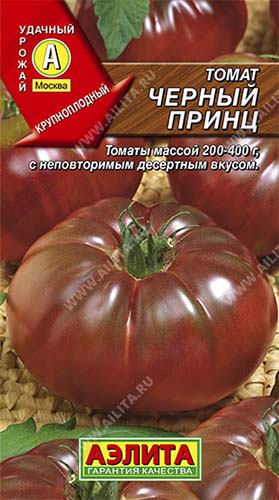
- Mid-season variety (110-115 days from germination to fruiting).
- The plant is determinate, medium-sized, 1-1.5 m high (according to other sources, indeterminate, up to 2 meters high).
- Recommended for open ground (with a tie to stakes), glazed and plastic greenhouses.
- Fruits are flat-round, ribbed, dense, dark red with black tint.
- Weight - 250 g (200-400 grams).
- Productivity - 6-7 kg per sq.m.
- For salad purposes: recommended for fresh consumption. The pulp is fleshy, juicy, sweet (dessert taste).
- It is relatively resistant to late blight.
And other black indeterminate varieties and hybrids: Viagra, Cherry black, Pear black, De Barao black, Marshmallow in chocolate, Japanese truffle black, etc.
By the way! In general, the site has a detailed article about black varieties of tomatoes .
Unusual shaped tomatoes
Among the tall tomatoes for the greenhouse in which the most unusual shape can be distinguished the following varieties:
Auria
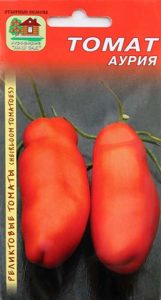
- Mid-season variety, 100-110 days.
- The plant is indeterminate, tall, but compact.
- Fruits are dense, the stalk is articulated, palmate, 15-22 cm long, with unusually long sepals, collected in beautiful clusters. The skin of the fruit is red and shiny.
- Weight - 150-200 grams.
- The taste is pleasant, the fruits are fleshy.
- Perfect for use in salads and home canning.
Honey drop
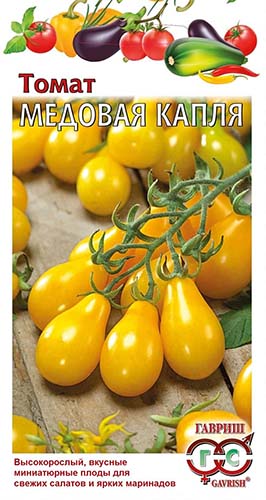
- Medium early variety (from germination to fruiting 100-110 days).
- The plant is indeterminate, tall, taller than 2 meters. Garter and shaping are required.
- For growing in open ground and film greenhouses.
- Fruits are teardrop-shaped, smooth, honey-colored.
- Weight - up to 30 g (on average 10-15 grams).
- Productivity - up to 5 kg per sq. m.
- Pleasant sweetish taste with delicate tomato aroma.
- Universal use: for the preparation of mouth-watering and bright fresh salads, pickles, marinades, delicious snacks and canapes.
Puzata Hata
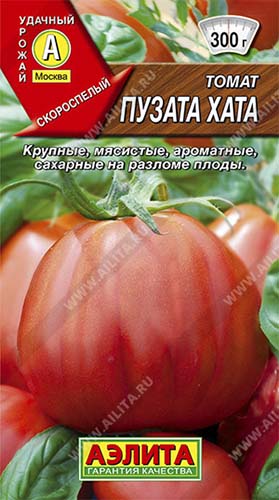
- Early ripening variety, the period from germination to the beginning of harvesting is 103-110 days.
- Plants are indeterminate, 1.2-1.5 m high.
- Designed for growing in open ground and film greenhouses.
- The fruits are large, with a unique pear-shaped shape. The number of slots is 4-6.
- The mass is about 300 grams.
- Productivity - 9-11 kg per sq.m.
- Fruits are juicy, fleshy, sugar on the break, with excellent taste. Perfect for fresh salads, juices, any culinary processing and winter preparations.
Japanese truffle black
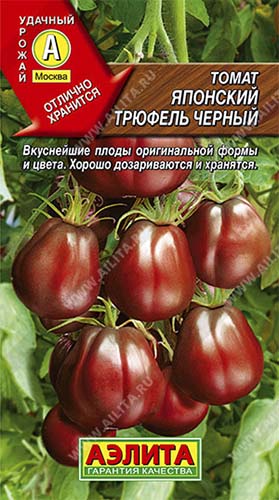
- Mid-season variety, from germination to fruiting 111-115 days.
- The plant is indeterminate, 1.5-2 meters high. Form into 1-2 stems, leaving 4-5 brushes of 5-6 fruits on the stem.
- For greenhouse cultivation (in the middle lane) and open ground (in the south).
- Fruits are black-brown, glossy, very dense. Truffle shape.
- Weight - 100-150 g.
- Productivity - up to 4 kg per plant.
- Fleshy fruits. The taste is sweet with sourness; during storage, the sweetness increases. Universal use: for making salads and canning whole fruits.
- Green fruits, taken at the end of the season, are perfectly ripened and stored until the New Year.
- Protect brushes from creases.
Cherry
Separately, it is worth highlighting small-fruited tomatoes, which are called Cherry (the color of the fruit is given in parentheses).
The most popular indeterminate Cherry varieties are those already described earlier.Chio-chio-san (pink fruits) and Honey drop (yellow fruits of a very unusual shape), as well as:
- Vera (red);
- Cherry is black;
- Cherry yellow and red;
- Ira (red);
- Paints (yellow) and others.
Note! The site already has a detailed article about the best varieties of cherry tomatoes.
Video: varieties of tomatoes for growing in a greenhouse
Determinant Tomatoes for Greenhouse Growing
As a rule, determinant and especially super-determinant varieties of tomatoes are not grown in greenhouses, because this is a kind of waste of precious space, because they can also be planted in open ground.
Actually, therefore, it is possible to grow determinant varieties of tomatoes in a greenhouse for 2 reasons:
- As necessary: if you live in the north, where the summer is very short, and tall tomatoes simply do not have time to ripen and give a normal harvest even in a greenhouse.
- Optional: you really like a determinant strain and want to get the most out of it.
By the way! In greenhouse conditions, whatever variety you plant, the yield will usually be much higher than in the open field.
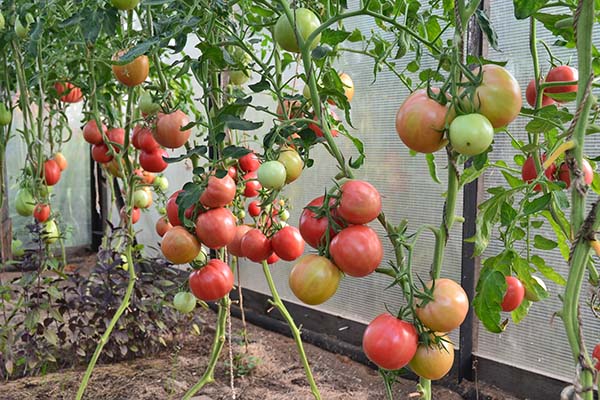
However! There are medium-sized determinant tomatoes (above 60-70 cm), as well as semi-determinant tomatoes (about 1.5 meters), which in the same Middle Lane are recommended to be grown in a greenhouse.
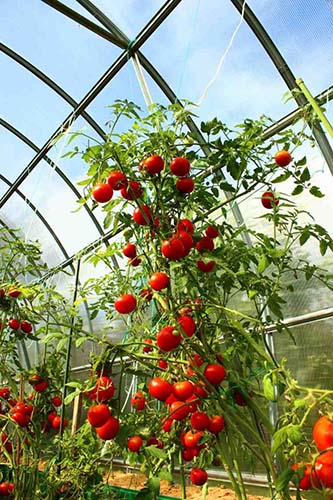
Advice! On the features and benefits of growing determinant tomatoes read in detailin this article.
The best low-growing tomatoes for the greenhouse
By the way! If you want to get the earliest possible harvest, then undersized tomato varieties are considered the earliest.
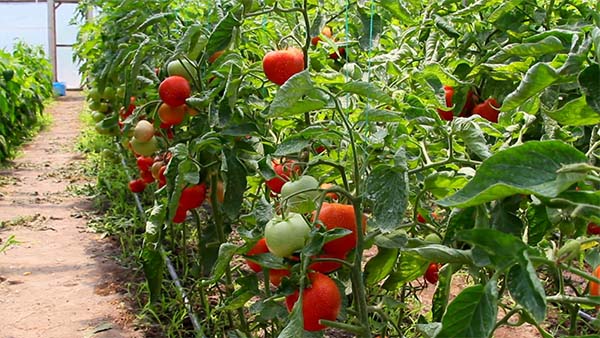
Note! The site already has a detailed article about the best and most popular low-growing standard and dwarf determinant tomatoes.
Medium-sized determinate and semi-determinate tomatoes for the greenhouse
The most popular and best medium-sized determinant and semi-determinant tomatoes are:
Banana feet
The main hit of recent years in the category of yellow (orange) tomato varieties.
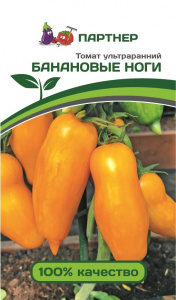
- Ultra-early variety, from germination to harvest of 90-96 days.
- The plant is semi-determinate. The first inflorescence is laid above 9-11 leaves, the next ones - after 2-3. It is desirable to form the plant in 2-3 stems, but the formation of up to 5 stems is permissible.
- The fruits are two-chambered, cylindrical in shape with a tuberous surface and a strongly drawn-out thin pointed nose, inclined to the side. The color is rich yellow-orange with yellow stripes, in which blotches of pink are noticeable.
- Weight - 50-80 g.
- Productivity - 5 kg per plant.
- The fruit taste is very good. The pulp melts in the mouth.
- Universal use: well suited for cooking a wide variety of dishes, preserving and preparing tomato juice of unusual color.
- Resistant to the main diseases of tomatoes.
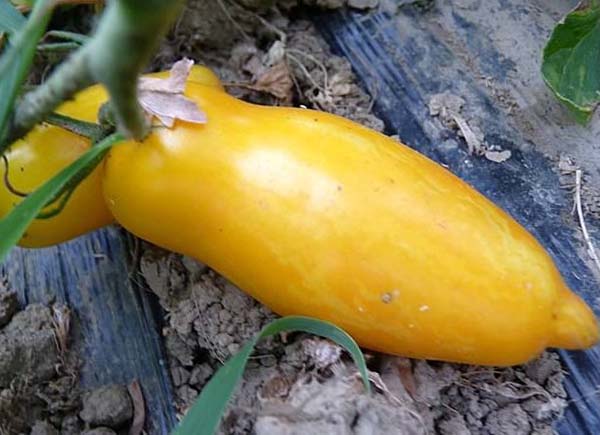
Blagovest F1
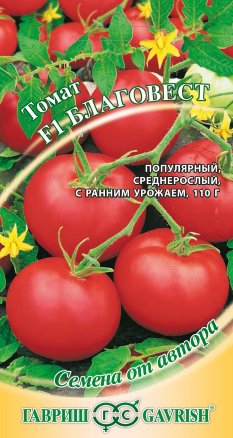
- Early ripe hybrid (101-105 days from germination to fruiting).
- The plant is determinate (semi-determinate), medium-sized (150-180 cm), medium-branched, medium-leafy. Form into 1-2 stems. The first inflorescence is laid above 6-7 leaves, the next ones after 1-2 leaves.
- Recommended for glazed and film greenhouses.
- The fruit is round, slightly ribbed, glossy, red. The number of sockets is 2-3.
- Weight - 100-110 grams.
- Productivity - 5.0-5.5 kg per plant.
- Excellent taste. Universal. Perfect for fresh salads and whole fruit preserves.
- Resistant to the causative agents of the tobacco mosaic virus, cladosporiosis, fusarium.
Verlioka F1
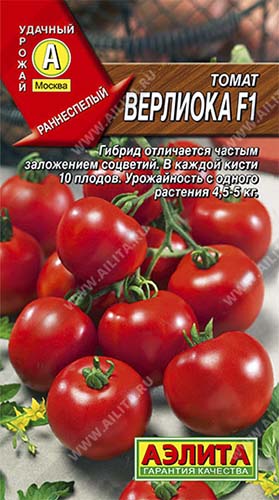
- An early ripe hybrid, 101-105 days from germination to fruiting.
- The plant is determinate (semi-determinant), medium-sized (1.0-1.5 m). It is formed into one stem by transferring the growth point to the lateral shoot ("stepson") under the third inflorescence.
- Recommended for film and glazed greenhouses.
- Fruits are round, red, collected in clusters up to 10 pcs.
- Weight - 80-90 g.
- Productivity - 4.5-5.0 kg per plant.
- Delicious, juicy, aromatic. Perfect for fresh salads and whole-fruit canning.
- Resistant to the causative agents of the tobacco mosaic virus, cladosporiosis, fusarium.
Gives a full harvest even with insufficient light and high humidity.
Cow heart
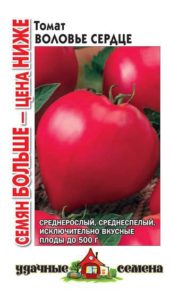
- Mid-season variety (111-115 days).
- The plant is semi-determinate, up to 120 cm high, according to other sources, indeterminate, up to 160-180 cm). 4-5 clusters are formed on the main stem, each of which contains up to 5 large fruits.
- For open ground, film greenhouses and greenhouses.
- Fruits are multi-chambered, cone-shaped (heart-shaped), pink-crimson,
- Weight - 300-500 g (according to other sources, 150-300 grams).
- Productivity - 6-8 kg per sq.m.
- Excellent taste: the fruits are fleshy, very juicy, extremely tasty and aromatic.
- For preparing fresh salads and juices.
- Possesses complex resistance to the main diseases of tomato.
Mazarin F1
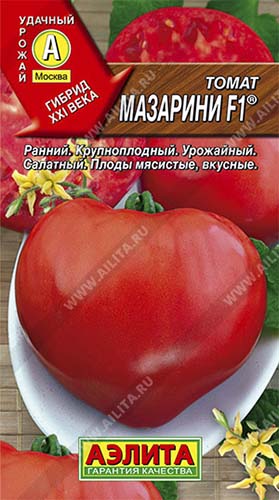
- Early hybrid, from germination to fruiting - 95-105 days.
- The plant is determinate. Medium-sized, powerful, 110-130 cm high. The inflorescence is simple, with 5-6 fruits, the first inflorescence is laid over the 6th leaf, the subsequent ones - after 1-2 leaves.
- For cultivation in a film greenhouse in the Middle Lane, in the southern regions - in the open field.
- The fruits are large, red, dense, fleshy, rounded with a spout (heart-shaped). The number of chambers (nests) is 3-4.
- Weight - 160-200 g.
- Productivity - 13.5-14.0 kg per sq.m.
- The taste of tomatoes is excellent.
- Resistant to TMV and black bacterial spot.
Raspberry Giant
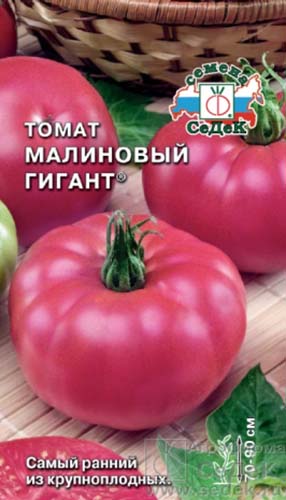
- Early grade. From germination to the beginning of fruiting - 105-110 days.
- The plant is determinate, spreading, 70-90 cm high. It requires moderate pinching.
- For open ground and film shelters.
- The fruit is flat-round, crimson.
- Weight - 200-400 grams (the first - up to 500-600 g).
- Productivity - 5.9 kg per sq.m
- Excellent taste and valuable dietary qualities.
- For salad purposes: recommended for fresh consumption and preparation of various salads.
Diva F1
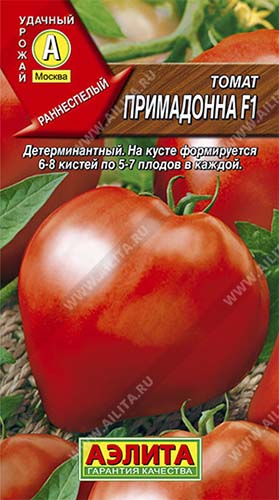
- An early ripe hybrid. From germination to fruiting - 95-105 days (according to other sources, 90-95 days).
- The plant is determinate, medium-sized, 90 cm high (according to other sources, up to 120-130 cm). On the bush, 6-8 clusters are formed, 5-7 fruits per cluster.
- For open and protected ground.
- Fruits are red, heart-shaped with a “nose”, slightly ribbed, dense. The number of nests is 4-6.
- Weight - 100 g (up to 120-130 grams).
- Productivity - 15-18 kg per sq.m.
- Balanced taste, universal use: recommended for fresh consumption, home cooking, canning and making tomato juice.
- Resistant to cracking, alternaria, verticillosis, tomato mosaic virus, fusarium.
- Recommended for fresh consumption, home cooking, canning and processing into tomato products.
Pink Elephant
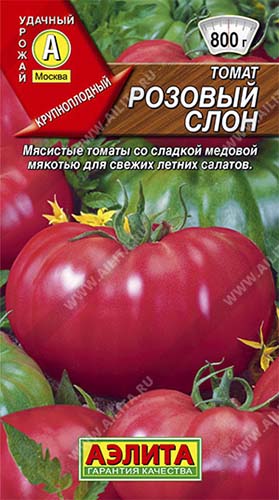
- Medium early variety (period from full sprouting to fruit ripening 110-115 days).
- The plant is semi-determinate, medium-sized, medium-leafy. The first inflorescence is laid over the 7th leaf, the subsequent ones - after 2-3 leaves.
- For growing in the open field and under film shelters.
- The fruit is large, ribbed at the base, fleshy, multi-chambered. The color of the ripe fruit is pink.
- Weight - 300 g (up to a maximum of 800 grams).
- Productivity - 6.5-8.5 kg per sq.m.
- The taste is excellent. Recommended for fresh consumption, in salads.
Persimmon
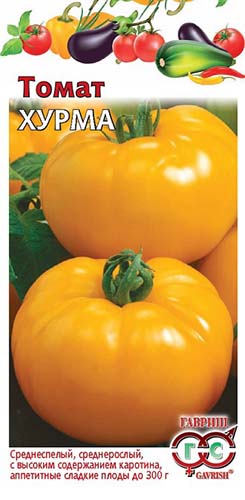
- Mid-season variety. From germination to fruiting - 110-115 days.
- The plant is of a determinant type (with limited growth), strongly leafy, slightly branched, medium-sized, 70-100 cm high. The first inflorescence is laid above the 7th leaf, the subsequent ones - after 1-2 leaves.
- For cultivation in plastic greenhouses and open field with a tie to the stakes.
- Fruits are flat-round, golden-orange. The number of nests (chambers) is more than 4.
- Weight - up to 300 g (average - 240 grams).
- Productivity - up to 2-3 kg per plant or 5.8 kg per sq.m.
- Very pleasant taste. With tender and sweet pulp, it contains a lot of beta-carotene.
- The fruits are perfect for making fresh summer salads (for dietary meals).
- Differs in long-term fruiting.
Monomakh's hat
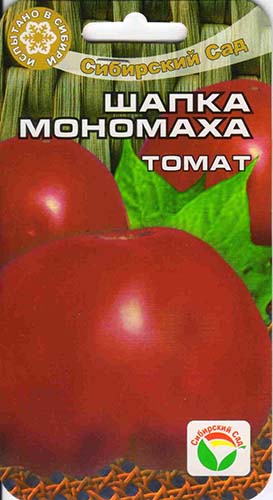
- Mid-season variety.
- The plant is determinate, medium-sized, 90-130 cm high.
- For growing in open ground and film shelters (greenhouses).
- Fruits are oval-rounded, dark crimson in color. Number of nests 4 or more.
- Weight - 600-900 g or more.
- Productivity - up to 20 kg per sq.m. in the greenhouse and up to 8 kg in the open field.
- The fruits are sugary, of very high taste. Used fresh and for canning.
- Quite highly resistant to the main diseases of tomatoes.
- It tolerates temperature fluctuations well.
- With waterlogged soil, the fruits are prone to cracking.
Note! The site also has a detailed article about the best varieties of determinant tomatoes.
Even when growing tomatoes in a greenhouse - in conditions that really suit them, it is necessary to carefully approach the choice of varieties. In this case, the closest attention should be paid to the external characteristics, yield, taste and immunity to diseases. Worthy harvests!
Video: an overview of tomato seeds for a greenhouse
By the way! Of course, this review list of the best tomato varieties for the greenhouse is not definitive. Chances are, you have your favorite and trusted favorites. Write about them in the comments, and we will definitely add the best of them to the article!

